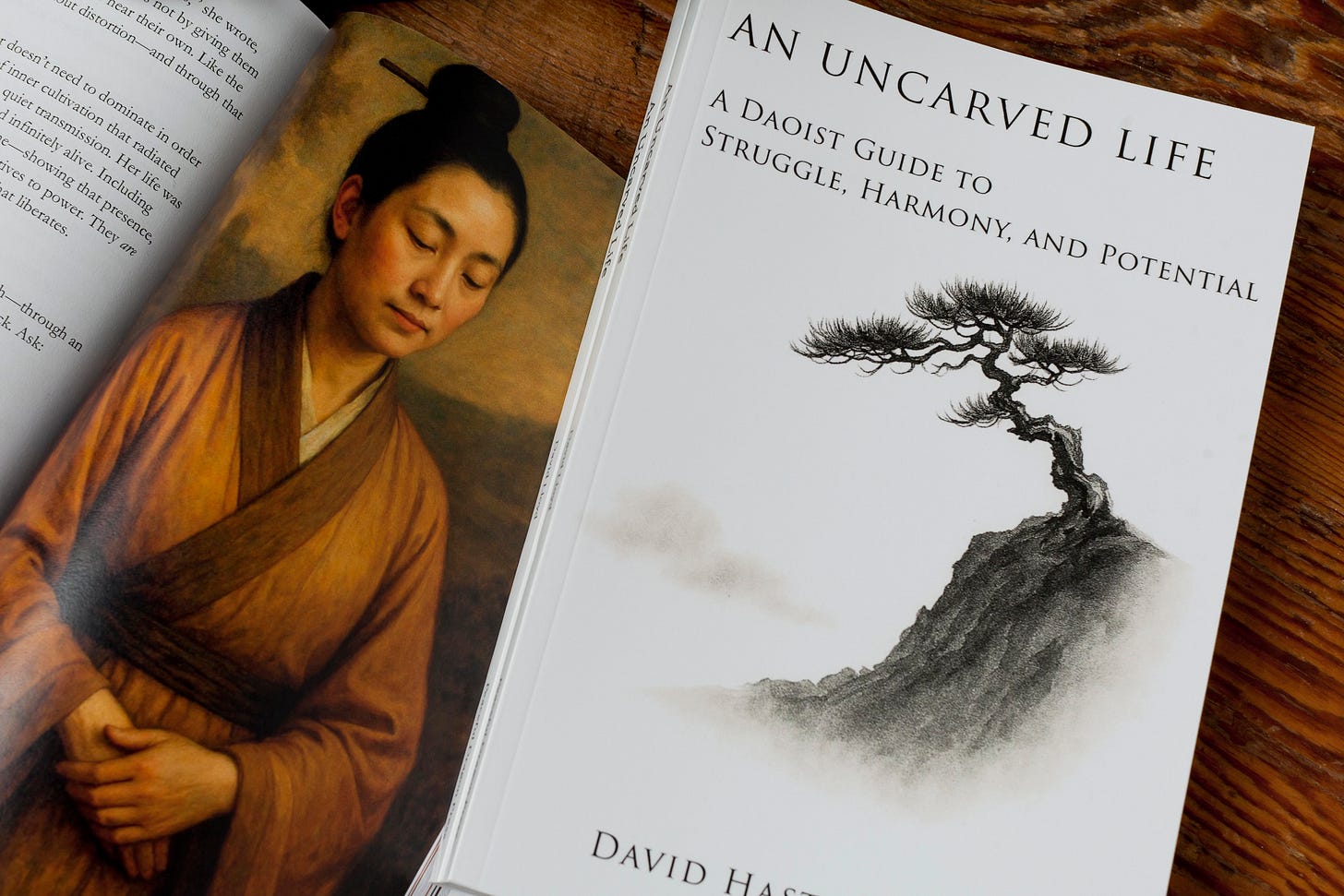Peer-Reviewed Research: Qigong and Chronic Low Back Pain
Chronic low back pain is something nearly everyone encounters at some point in life. According to the World Health Organization, it’s one of the leading causes of disability worldwide. Imagine the ripple effects: people struggle to sit at work, lift groceries, or play with their grandchildren. Healthcare systems spend billions every year on treatments that often offer only partial relief. Pills can upset the stomach or damage the kidneys when used long term. Surgery, in severe cases, is costly, risky, and requires months of recovery. In between, countless physical therapy sessions, exercise routines, and complementary approaches are tried, sometimes with success, sometimes not.
Against this backdrop, a new study asks a simple but profound question: could qigong—an ancient Chinese practice of slow, mindful movements—be part of the solution?
A team of researchers led by Donghui Yu and colleagues (2025) published a systematic review and meta-analysis in the Journal of Orthopaedic Surgery and ResearchQigongLowerBackPain. They combed through the medical literature to see whether qigong really makes a measurable difference for people with chronic non-specific low back pain (CNLBP)—that is, ongoing back pain not linked to a specific injury, infection, or disease. Their findings shine light on both the promise and the limits of this gentle, low-cost practice.
What is Qigong?
Qigong (pronounced chee-gong) is often described as a moving meditation. It blends slow, deliberate postures with controlled breathing and mental focus. Unlike tai chi, which has martial arts roots and choreographed routines, qigong is more flexible. Its forms—such as Baduanjin (Eight Brocades), Liuzijue (Six Healing Sounds), and Wuqinxi (Five Animals Play)—are traditionally designed for health, not combat.
For people with back pain, qigong is thought to help in several ways:
Improving posture and reducing pressure on the spine
Increasing blood flow, oxygen, and nutrients to sore muscles
Reducing inflammation through gentle movement and relaxation
Strengthening muscles that support the lower back
Calming the nervous system, which can modulate how pain is perceived
And unlike many treatments, qigong requires no equipment, has minimal risks, and can be practiced at home or in community groups.
How Did the Researchers Study It?
Yu and colleagues didn’t just look at one or two studies. They conducted a systematic review and meta-analysis, the gold standard for summarizing evidence. This means they searched nine large databases, including both Western sources like PubMed and Chinese databases like CNKI, to ensure they captured as many studies as possible.
They applied strict rules: only randomized controlled trials (RCTs)—the most reliable form of clinical evidence—were included. In total, they analyzed 16 RCTs involving 1,175 participants across China, Germany, and Thailand. Most of the participants were around 60 years old, reflecting the age group most affected by chronic back pain.
To measure outcomes, the researchers focused on two key aspects:
Pain intensity, measured with tools like the Visual Analog Scale (VAS), where patients rate their pain on a scale (usually 0–10).
Disability, measured with questionnaires like the Oswestry Disability Index (ODI), which captures how back pain interferes with daily life.
This dual focus is crucial: pain levels matter, but so does the ability to function—whether someone can bend, walk, sleep, or work.
What Did They Find?
The results were nuanced. On one hand, qigong did reduce pain and disability compared to control groups. But on the other, the degree of improvement did not always reach the threshold considered “clinically meaningful.”
Pain: Across all studies, qigong participants reported lower pain scores than controls. The average reduction was about 1.34 points on the 10-point scale. That’s statistically significant—but doctors often look for at least a 1.5–2 point drop to call it clinically important. In other words, the effect was real, but modest.
Disability: Here, qigong showed a slightly stronger impact. Participants reported an average improvement of 5.88 points on the ODI. Again, that’s statistically significant, but the commonly accepted “minimal important difference” is 10 points. So, the benefit is clear but may not transform daily function for everyone.
Interestingly, short-term programs (under 12 weeks) produced better results than longer ones. This may reflect an initial placebo boost, stronger motivation at the start, or practical issues like people dropping out over time.
Among different styles, Liuzijue and Yijinjing seemed especially effective, though the evidence is limited. Meanwhile, Neiyanggong (a style emphasizing inner nourishment) showed the weakest results.
Why the Mixed Results?
The review emphasizes caution. While the numbers suggest qigong helps, several issues complicate the picture:
Heterogeneity: The studies varied widely—in the type of qigong used, session length (30 to 90 minutes), frequency (once a week to daily), and duration (a few weeks to six months). This makes pooling results tricky.
Cultural context: Most studies were conducted in China, where participants may have stronger cultural beliefs in qigong, potentially enhancing placebo effects.
Publication bias: The researchers found signs that positive studies were more likely to be published than negative ones, which could inflate the overall effect.
What Does This Mean for Patients?
For people struggling with chronic low back pain, these findings are encouraging but realistic. Qigong is not a miracle cure. It probably won’t erase pain entirely or fully restore function. But as part of a broader treatment plan—alongside physical therapy, exercise, or medication—it may provide meaningful relief.
Even a modest reduction in pain can help people rely less on painkillers. A small improvement in mobility can mean walking to the store or sleeping through the night without discomfort. And unlike many medical treatments, qigong carries almost no side effects. At worst, beginners may experience mild soreness or fatigue.
Moreover, qigong offers something beyond numbers on a scale: it gives patients agency. Instead of lying on a treatment table, they actively participate in their healing. The slow, mindful movements can foster relaxation, reduce stress, and improve mood—important factors in the complex experience of chronic pain.
Broader Implications
This review also speaks to a larger trend in medicine: the search for non-pharmacological, holistic approaches to chronic conditions. The opioid crisis, in particular, has forced healthcare providers to look beyond prescriptions for pain management. Mind–body practices like qigong, yoga, and tai chi are increasingly studied as safe, accessible alternatives.
Still, the evidence base needs strengthening. The authors call for more high-quality, multicenter trials with standardized qigong protocols. They also recommend exploring additional outcomes—like quality of life, mental health, and long-term adherence—beyond just pain and disability scores.
A Balanced Takeaway
So where does this leave us? Qigong, according to this comprehensive review, does help with chronic non-specific low back pain. The benefits are statistically significant, though not always clinically dramatic. It’s safe, inexpensive, and adaptable. For patients and clinicians alike, it represents a promising adjunct therapy rather than a stand-alone solution.
Perhaps the deeper value of qigong lies not only in reducing pain scores but in transforming how people relate to their pain. By encouraging gentle movement, mindful breathing, and inner awareness, qigong offers a way to live with more ease—even when pain persists.
As chronic pain experts often remind us: when it comes to management, small steps can make a big difference. Qigong may be one such step.
Reference
Yu, D., Wu, M., Zhang, J., Song, W., & Zhu, L. (2025). Effect of qigong on pain and disability in patients with chronic non-specific low back pain: A systematic review and meta-analysis of randomized controlled trials. Journal of Orthopaedic Surgery and Research, 20(194).
Like what you read? Keep exploring…
If this post resonated with you, you’ll love my book:
An Uncarved Life: A Daoist Guide to Struggle, Harmony, and Potential
This book blends timeless Daoist wisdom with real-world insight into how we can navigate struggle, cultivate inner peace, and live in alignment with our deeper potential. Drawing from classical texts like the Dao De Jing and integrating modern psychology and neuroscience, An Uncarved Life offers a grounded, poetic, and deeply personal guide to living well in a chaotic world.
Whether you’re seeking clarity, calm, or a more meaningful path forward, this book is a companion for anyone who wants to walk the Way with sincerity and strength.
Available now in print, Kindle, and audiobook formats.
Click here to get your copy on Amazon



